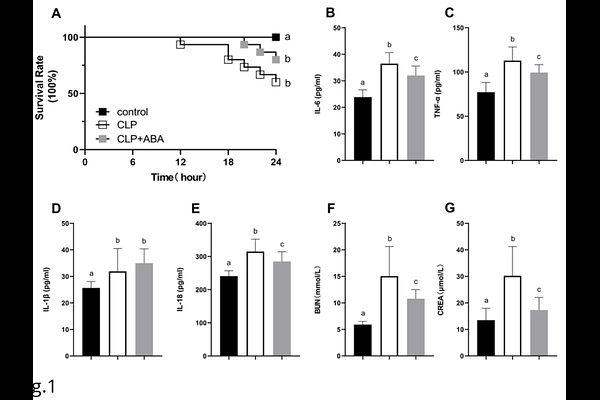The abscisic acid could reverse the cuproptosis in sepsis-associated acute kidney injury through the inhibition of ferredoxin-1

The abscisic acid could reverse the cuproptosis in sepsis-associated acute kidney injury through the inhibition of ferredoxin-1
Ai, T.; Shi, A.; Chen, J.; Ya, M.; Li, H.; Tang, J.; Shi, Z.; Song, Z.; Jiang, Y.; Zhu, M.
AbstractSepsis-associated acute kidney injury (S-AKI) is a grave clinical condition with a poor prognosis. Prior studies have observed a potential correlation between copper (Cu) and S-AKI, though the underlying mechanisms remain to be fully elucidated. The present study aims to investigate the underlying mechanism between Cu and renal dysfunction under sepsis conditions. Utilizing a cecal ligation and puncture (CLP) murine model, we observed a substantial upregulation of inflammatory factors and deteriorated renal function (p<0.05), concomitant with an augmented mortality rate (p<0..05). Concurrently, the renal tissue exhibited a series of pathological manifestations, including fibrosis and cell death. Concurrently, the expression of the cuproptosis-regulating protein FDX-1 (p<0.05) was found to be elevated in CLP mice. Collectively, these data indicated the activation of cuproptosis in CLP-induced S-AKI. Intriguingly, the application of abscisic acid (ABA), a FDX-1 inhibitor, led to a substantial alleviation of mortality rate and inflammatory factor level (p<0.05). Furthermore, a significant alleviation was observed in renal pathology and biofunction (p<0.05). Collectively, these observations suggest that ABA exerts a protective effect on renal function during cuproptosis promoted S-AKI. Consequently, it can be concluded that ABA has the potential to reverse cuproptosis in S-AKI by inhibiting FDX-1.